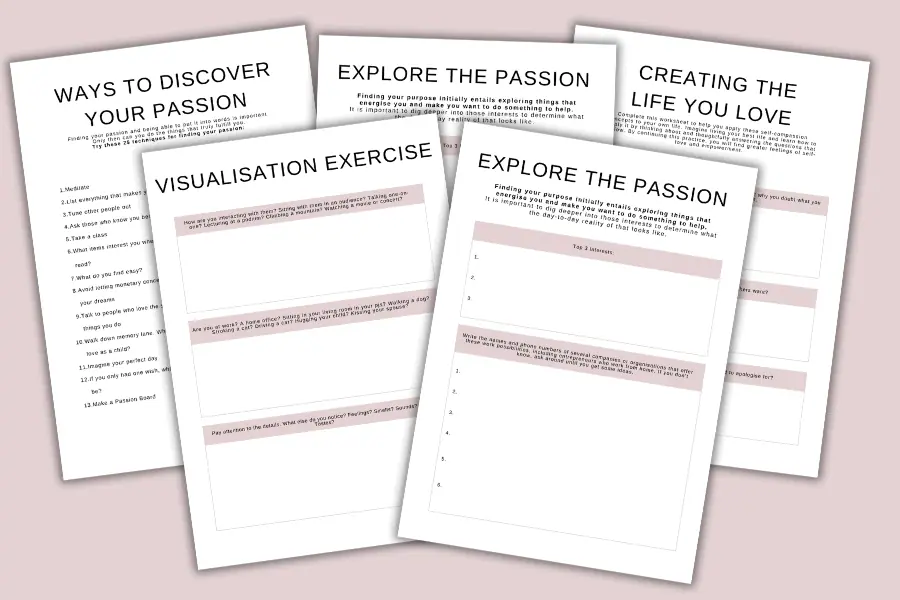The Importance of Boundaries In The Workplace

In the bustling world of work, finding the delicate balance between being a dedicated professional and preserving your personal space can feel like walking a tightrope. That’s where workplace boundaries come into play. They’re like the gentle fences that help define where our professional responsibilities end and our personal lives begin.
This blog post is about boundaries in the workplace

Understanding Workplace Boundaries
Workplace boundaries are like the invisible lines that define the limits of professional conduct and interaction within an organisation. They encompass a range of aspects, from physical boundaries, which are your personal space and privacy, to emotional boundaries, which involve managing your feelings and reactions in a professional context. Additionally, time boundaries dictate when and how long we dedicate ourselves to work-related tasks, while communication boundaries focus on the ways we express ourselves and engage with colleagues and superiors.
It’s helpful to imagine these boundaries as a set of guiding principles that steer us through our professional lives. Just as road signs keep traffic flowing smoothly, workplace boundaries ensure that our interactions and tasks progress harmoniously, creating an environment where everyone can thrive.
Why They Are Crucial for a Healthy Work Environment
Now, you might be wondering, why are these boundaries so vital? Well, think of them as the pillars supporting a sturdy structure. Without clear boundaries, the workplace can become a chaotic arena, where personal and professional realms blur, potentially leading to misunderstandings, conflicts, and even burnout.
Establishing and respecting boundaries is the cornerstone of a healthy work environment. It fosters trust and mutual respect among team members, allowing them to collaborate effectively. When everyone understands and acknowledges these boundaries, it creates a space where you can bring your best self to work without feeling overwhelmed or encroached upon.
Moreover, workplace boundaries promote a sense of well-being and balance. They provide you with the space and time you need to recharge, preventing the onset of stress and exhaustion. In essence, they’re the compass that keeps us on course, ensuring that work doesn’t consume every waking moment and that personal lives are given the attention and care they deserve.
Types of Workplace Boundaries
Physical boundaries
Physical boundaries are like the hedges around your personal space. They define the areas where you feel comfortable and secure in your workplace. This can encompass your desk, office, or even your personal belongings. Respecting physical boundaries means giving others the space they need to work efficiently without intrusion.
For instance, a polite knock on the door before entering a colleague’s office or refraining from borrowing personal items without permission are simple ways to honour physical boundaries. By doing so, you create an environment where everyone feels valued and respected.
Emotional boundaries
Emotional boundaries are the guardians of your feelings and emotional well-being. They dictate how much of your inner world you share with your colleagues. While it’s essential to build strong professional relationships, it’s equally important to strike a balance. Oversharing personal struggles or emotions in the workplace can sometimes blur the lines between personal and professional life.
Setting emotional boundaries means being mindful of how much you reveal about your personal life and being attuned to the emotions of others. This allows for a supportive work environment without crossing into the realm of oversharing.
Time boundaries
Time boundaries are the clock hands that help you allocate your working hours effectively. They determine when you’re available for meetings, collaboration, and when you need uninterrupted focus. Respect for time boundaries is key to maintaining productivity and preventing burnout.
For instance, setting specific hours for meetings or designating blocks of time for focused work can help establish clear time boundaries. This ensures that everyone’s time is valued and utilised efficiently.
Communication boundaries
Communication boundaries are like the channels through which information flows in the workplace. They involve how you express yourself, receive feedback, and engage with colleagues. Clear and respectful communication is fundamental to a well-functioning team.
Ensuring effective communication boundaries means being considerate of others’ preferences and sensitivities. It might involve choosing the appropriate medium for a message, active listening, and giving and receiving feedback with empathy and respect.
Benefits of Established Boundaries
Improved work-life balance
Imagine work and personal life as a seesaw. Without proper boundaries, one side can easily tip too far, leaving the other neglected. By setting clear boundaries, you’re essentially ensuring that both sides receive the attention they deserve. This leads to a more harmonious work-life balance, allowing you to be present and engaged both in the workplace and in your personal life.
Taking breaks, leaving work at the office, and carving out quality time for yourself and your loved ones are all ways that boundaries support a healthier balance. It’s like fitting together the pieces of a puzzle, creating a picture that represents a fulfilling, well-rounded life.
Increased productivity and efficiency
Boundaries are like the guide rails on a race track. They help keep you on course, focused, and moving forward. When you establish clear boundaries around your tasks and time, you’re better equipped to prioritise and manage your workload effectively.
For example, setting specific time slots for focused work and minimising distractions during those periods can significantly boost productivity. By respecting your own boundaries, you’re maximising your efficiency and output, ultimately leading to more accomplished and satisfying workdays.
Enhanced job satisfaction and well-being
Boundaries play a crucial role in fostering a positive work environment. When everyone respects each other’s limits, it creates a culture of mutual understanding and support. This, in turn, leads to higher levels of job satisfaction and overall well-being.
Feeling heard, valued, and respected at work significantly contributes to job satisfaction. It also reduces stress levels and prevents burnout, allowing you to thrive both professionally and personally. It’s like tending to a garden – with the right care and attention, you’ll see your job satisfaction and well-being bloom.
Setting and Communication Boundaries
Setting boundaries begins with self-awareness. Take a moment to reflect on what makes you comfortable and what doesn’t in your professional interactions. Consider what you’re willing to share about your personal life, your preferred work hours, and the level of collaboration that suits you best.
For example, you might realise that you work most efficiently in the morning, or that you prefer to keep personal matters private. These realisations are the building blocks of your personal boundaries.
Tips for effective communication of boundaries
Be clear and specific
When communicating your boundaries, clarity is key. Clearly state what your boundaries are and why they’re important to you. For instance, if you prefer not to be interrupted during certain tasks, you might say, “I find that I’m most productive when I have uninterrupted time to focus on tasks. Could we schedule meetings for the afternoon?”
Choose the right time and place
Timing matters. Pick a moment when both you and the person you’re speaking to can have a focused conversation. Avoid bringing up boundaries in the midst of a hectic workday or during a high-stress situation.
Use “I” statements
Frame your boundaries as personal preferences rather than absolutes. For example, say, “I find it works best for me when I have some quiet time in the morning to concentrate.”
Listen and be open to feedback
Boundaries are a two-way street. Be open to hearing others’ perspectives and be willing to negotiate when necessary. This fosters a culture of respect and collaboration.
Follow through
Once you’ve communicated your boundaries, make sure to uphold them. Consistency reinforces the message that your boundaries are important and worthy of respect.
Seek Support if needed
If you’re struggling to communicate your boundaries, consider seeking advice from a trusted colleague, supervisor, or HR professional. They can offer guidance and support in navigating these conversations.
Remember, setting and communicating boundaries is a skill that takes practice. The more you do it, the more confident and comfortable you’ll become in establishing the work environment that best supports your productivity and well-being.
Tools and Strategies for Maintaining Boundaries
Time management techniques
Effective time management is like having a compass in the world of work. It helps you navigate through tasks and responsibilities while ensuring you allocate time for personal pursuits. Here are some practical time management techniques to help you maintain boundaries:
Prioritise tasks
Identify the most important and time-sensitive tasks each day. This ensures you allocate your energy and focus where it’s needed most.
Set realistic deadlines
Be mindful of setting achievable deadlines. Avoid overloading yourself with unrealistic expectations, as it can lead to stress and overwork.
Use time blocks
Divide your workday into specific time blocks dedicated to different tasks or types of work. This helps you maintain focus and avoid multitasking.
Take regular breaks
Scheduled breaks are essential for recharging your energy and maintaining productivity. Use them as opportunities to step away from work and reset.
Learn to say no
It’s okay to decline additional tasks or meetings if your schedule is already full. Politely declining when necessary is a crucial aspect of setting and maintaining boundaries.
Utilising technology for better boundary management
Technology can be a powerful ally in maintaining boundaries if used wisely. Here are some ways to harness technology for better boundary management:
Use calendar apps
Leverage calendar apps to schedule and block out specific times for tasks, meetings, and personal activities. Set reminders to help you stay on track.
Set notifications and do not disturb mode
Customise notifications on your devices to minimise distractions during focused work periods. Use “Do Not Disturb” mode to temporarily silence notifications.
Automate routine tasks
Identify repetitive tasks that can be automated, such as email responses or routine reports. This frees up time for more impactful work.
Establish communication norms
Use tools like instant messaging apps to set clear communication norms. Let colleagues know when you’re available for immediate responses and when you prefer uninterrupted work time.
Utilise time-tracking apps
Consider using time-tracking apps to monitor how you’re spending your work hours. This can provide valuable insights into where your time is best allocated.
By incorporating these time management techniques and leveraging technology effectively, you can create a structured work environment that respects and supports your boundaries.
Main Points
As we wrap up our journey through the world of workplace boundaries, let’s take a moment to recap the key points we’ve covered:
We’ve explored the various types of boundaries – physical, emotional, time, and communication – that form the foundation of a harmonious work environment. These boundaries act as guides, steering us toward a balance between professional dedication and personal well-being.
Understanding the benefits of establishing boundaries is like discovering the hidden treasures of a well-managed workplace. They lead to improved work-life balance, increased productivity, and a profound sense of job satisfaction and well-being.
Implementing healthy boundaries in your workplace is a powerful step towards a fulfilling and sustainable career. Remember, it’s not about building walls, but about creating bridges that connect your professional and personal worlds in a way that empowers you.
So, as you embark on this journey, trust in your ability to establish and maintain boundaries that serve both your professional aspirations and personal well-being. Your workplace should be a space where you flourish, and with these insights, you’re well on your way to achieving just that.
This blog post was about boundaries in the workplace
Share this post: on Twitter on Facebook





